from
Uppland
#2
Dr. Phage
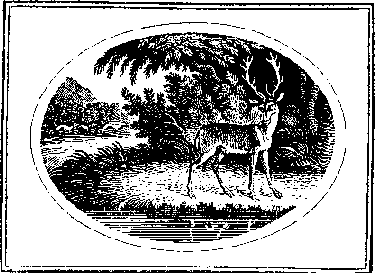 I spend a lot of time listening to Swedish FM radio. In addition to
varied and sometimes challenging classical music programming, they also
broadcast discussion programs which sound as if they would be interesting,
if only I could understand a word. The barrier here is more than my
ignorance of Swedish. There is a host of languages I am ignorant of, and
Swedish radio thoughtfully broadcasts in many of them.
I spend a lot of time listening to Swedish FM radio. In addition to
varied and sometimes challenging classical music programming, they also
broadcast discussion programs which sound as if they would be interesting,
if only I could understand a word. The barrier here is more than my
ignorance of Swedish. There is a host of languages I am ignorant of, and
Swedish radio thoughtfully broadcasts in many of them.The state radio system, in particular, makes a point of broadcasting to every conceivable national minority in the country. I have listened to several programs in Sami (Lapp), a language with which I have only the most limited connection. Offhand, you might suppose that the Samer, busy herding reindeer in the far North, would have difficulty finding electric outlets in which to plug their FM radios. But how silly of me, this is a civilized country: they probably have not only electric outlets, but even telephone plugs on every other snowdrift up there above the Arctic Circle. How else will the Samer, or for that matter the reindeer, check their E-mail? There have also been programs in Polish, in Italian, and in a liquid, flowing language with lots of l's which I suppose is Finnish. Every national minority, it seems, but mine. I did catch a portion of one program in French, and understood most of that; it turned out to be a kiddies program.
On the Radio-2 channel, I have also heard more standard modern music (Stravinsky, Hindemith, Bartok) in three weeks than I would in a year in Seattle. And more contemporary music --- like live broadcasts of the International Percussion Festival in Stockholm --- than I would in a billion years in Seattle. Turn on Radio-2 and you might hear Brahms, or, on the other hand, you might hear a Xenakis piece for percussion ensemble.
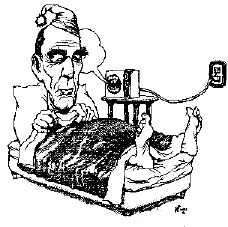 It is all rather a shock, to one accustomed to classical music
programming in the USA. On our one, commercial classical station in
Seattle, we are almost entirely spared the discomfort of standard modern
music, and contemporary music is absolutely forbidden. (There is one
exception to this otherwise inflexible rule: we are allowed to hear music
by Alan Hovhaness, who lives near Seattle and is viewed as a local
institution, like the Geoduck clam or Starbucks Coffee.) Otherwise, the
programming is a perpetual, background hum of Vivaldi's "Seasons," Tchaikowsky's "Swan Lake," and similar easy-listening aural wallpaper. A
naïve listener could get the impression that classical music consists of
nothing else, which must be the advertisers' intention. On Swedish
radio, however, even the nomads of the frozen North can keep in touch with
contemporary percussion music. Maybe, come to think of it, that is the
explanation. The programming here is not meant to soothe the listener
into semi-consciousness, because that would be dangerous for the Samer,
driving their herds among the ice-drifts, who need to keep alert.
It is all rather a shock, to one accustomed to classical music
programming in the USA. On our one, commercial classical station in
Seattle, we are almost entirely spared the discomfort of standard modern
music, and contemporary music is absolutely forbidden. (There is one
exception to this otherwise inflexible rule: we are allowed to hear music
by Alan Hovhaness, who lives near Seattle and is viewed as a local
institution, like the Geoduck clam or Starbucks Coffee.) Otherwise, the
programming is a perpetual, background hum of Vivaldi's "Seasons," Tchaikowsky's "Swan Lake," and similar easy-listening aural wallpaper. A
naïve listener could get the impression that classical music consists of
nothing else, which must be the advertisers' intention. On Swedish
radio, however, even the nomads of the frozen North can keep in touch with
contemporary percussion music. Maybe, come to think of it, that is the
explanation. The programming here is not meant to soothe the listener
into semi-consciousness, because that would be dangerous for the Samer,
driving their herds among the ice-drifts, who need to keep alert.
So far, I have taken the train down to Stockholm a couple of times just to wander around. It is a real walking city, located on a gorgeous site distributed between inlets of the Baltic Sea, and the shores of huge Lake Mälaren; the two bodies of water are connected by locks, and separated, so to speak, by bits and pieces of the city. Along the central harbour, there are broad but rather uncrowded streets, and squares, parks, and stately buildings such as the kings residence, the parliament, and the Grand Hotel. On some of the numerous bridges, public fishing is permitted, and I saw one fisherman land a salmon-trout only a short walk away from the king's palace.
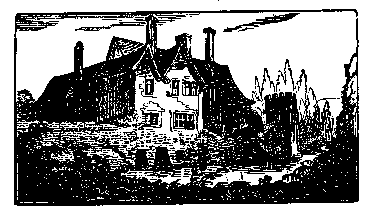 Just south of this region lies Gamla Stan, an ancient quarter which was
the center of town in medieval times. It is a maze of ancient
buildings --- in Sweden, medieval continues until the 17th century --- along
cobbled streets, alleys, and courtyards. Now it is a hive of small shops,
and the narrow streets are full of pedestrian traffic: shoppers, tourists,
and just people out for a stroll. Mysteriously, there is very little
automobile traffic on these streets, as if cars somehow realized that they
would be out of place here. The same is true in spades in
Drottningsgattan, north of the central harbour. This is a long shopping
street on which cars are actually Prohibited!
Just south of this region lies Gamla Stan, an ancient quarter which was
the center of town in medieval times. It is a maze of ancient
buildings --- in Sweden, medieval continues until the 17th century --- along
cobbled streets, alleys, and courtyards. Now it is a hive of small shops,
and the narrow streets are full of pedestrian traffic: shoppers, tourists,
and just people out for a stroll. Mysteriously, there is very little
automobile traffic on these streets, as if cars somehow realized that they
would be out of place here. The same is true in spades in
Drottningsgattan, north of the central harbour. This is a long shopping
street on which cars are actually Prohibited!
Needless to say, the absence of cars is deeply disorienting for an American. It produces a dream-like sensation, like the onset of an attack of delirium tremens. We depend on the continuous need to dodge automobile traffic to keep us fully conscious, and tend to lapse into a coma when we cannot fill our lungs with deep, satisfying draughts of smog. Moreover, our urban planning principles call for public space along a waterfront to be devoted to a sixteen-lane expressway, and the attendant complex of ramps and flyovers. As for Gamla Stan, we would of course have improved that district by replacing it with a cluster of office skyscrapers blotting out the sky, and a network of freeway ramps at ground level.
Stockholm is not completely devoid of towering office buildings. I did notice exactly five, east of Drotningsgatan. They date from the 60s or so, during what passes in Sweden for a construction boom. They make a useful landmark by which to navigate, inasmuch as it is rarely possible to take a siting of the sun in this country, but otherwise do not add much to the city's charm. There was another construction boomlet during the 80s, when several banks lost their shirts --- if, indeed, one can talk about a bank having a shirt --- building excess office capacity in the outlying districts. Although things do get built here, and a bit of construction is even under way at the University of Uppsala, one does not get the sense, as one does in the USA, that pouring concrete is the principal goal of existence.
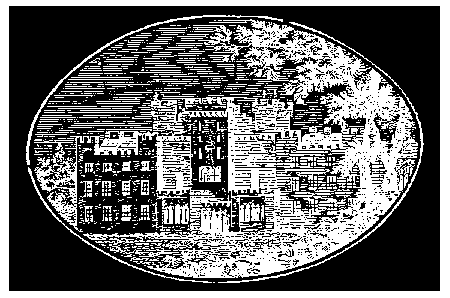 The Swedes have also dropped the ball on another, characteristic
American-style project: the endless construction/deconstruction of sports
stadia. Today, every American city is simultaneously demolishing one
football or baseball stadium and building two new ones. Tomorrow, I have
no doubt that these processes will be rationalized even further, with each
new sports stadium being demolished just as soon as it is completed, to
make way for its successor. But the citizens of Stockholm are deprived
of any exciting operations of this sort. They have sports stadiums in
the city but, unaccountably, they just use them for sporting events,
rather than as perpetual construction sites. The old world just doesn't
enjoy the sheer dynamism of the new, I guess.
The Swedes have also dropped the ball on another, characteristic
American-style project: the endless construction/deconstruction of sports
stadia. Today, every American city is simultaneously demolishing one
football or baseball stadium and building two new ones. Tomorrow, I have
no doubt that these processes will be rationalized even further, with each
new sports stadium being demolished just as soon as it is completed, to
make way for its successor. But the citizens of Stockholm are deprived
of any exciting operations of this sort. They have sports stadiums in
the city but, unaccountably, they just use them for sporting events,
rather than as perpetual construction sites. The old world just doesn't
enjoy the sheer dynamism of the new, I guess.
The national elections, held a week ago, kept Sweden in the same situation it was before: the Social Democrats still have a plurality, but they are short of a majority and will be forced to govern either in coalition, or at the sufferance of other parties on the Left side of the Riksdag. Most likely, there will be a parliamentary stew they refer to here as den rödgröna oredan, or the red-green mess. That means a coalition of the Social Democrats and the Greens, with the tacit cooperation of the Vänster or Left Party. The latter group is the former Communist Party, and were, I am told, thorough-going Stalinist worshippers of the USSR before the object of their adoration crumbled into dust, like a vampire overtaken by daybreak in the old B movies. They thereupon discovered that they had never actually espoused Communism all along, not really, but that their cause really was feminism.
After this quick change, one cannot help but suspect the Vänsters
of a touch of instability. Who knows, tomorrow they might switch to
botulism, embolism, impressionism, alcoholism, or perhaps the 12-tone
school of musical composition. In fact, they already have the politics of
alcoholism well in hand. Their leader is a leggy blonde named Gudrun
Schyman who conveys a certain beat-up, Lauren Bacallish glamour, and used
to appear in public from time to time absolutely pissed to the gills.
Making a virtue of necessity, she recently confessed that she was a
recovering alcoholic --- although it is possible to wonder how well her
recovery is going --- and, sure enough, took up the banner of alcoholism for
the Left Party. I find this altogether charming, inasmuch as my own
political tendance has evolved, over the years, from anarcho-syndicalism
to alcoholo-mongolism.
In the election, the Social Democrat vote dropped from 48% to 36%, their worst showing in many years, although they are still the largest single party in the Riksdag. Their decline, however, was matched by a nearly equal increase in the Vänster vote, perhaps reflecting the strength of the alcoholic bloc. In any case, the Left side of the spectrum retains about 50% overall, and the Right the other 50%, as in all civilized countries.
Amongst the parties of the Right, the Christian Democrats increased their vote at the expense of the others. Nobody knows precisely what the KDs stand for, except that they are moderate about it. They are surely more aligned with business than the Social Dems, but nonetheless they accept the general shape of the Scandinavian welfare state. In fact, part of their campaign focussed on improving welfare state benefits in certain respects. One of their campaign posters read: give us the power to make better provision for grandma. This has to do with the organization of old-age benefits, about which there were differences of detail between the Christian Dems and the Social Dem government.
The fact that the moderate Right compaigned to improve, rather than abolish, the welfare state shows where the centre of gravity lies in Swedish political life. The Swedish Right, in short, corresponds roughly to the moderate part of the US Democratic Party exemplified by President Clinton. The Gingrich-Armey-Lott-Helms Republicans we enjoy in the US have had no real counterpart in Europe since the late Generalissimo Franco of Spain began to liberalize his views in the early 1960s.
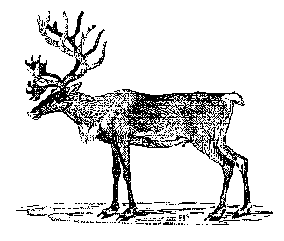 Thus, the latest Swedish election reflects a redistribution within the
stable 50:50 pattern. On the Right, the grandma bloc is becoming more
influential, on the Left, the alcoholic bloc. The reindeer bloc has yet
to be heard from.
Thus, the latest Swedish election reflects a redistribution within the
stable 50:50 pattern. On the Right, the grandma bloc is becoming more
influential, on the Left, the alcoholic bloc. The reindeer bloc has yet
to be heard from.